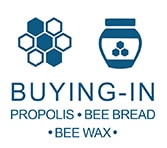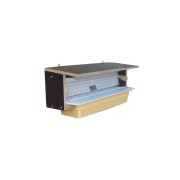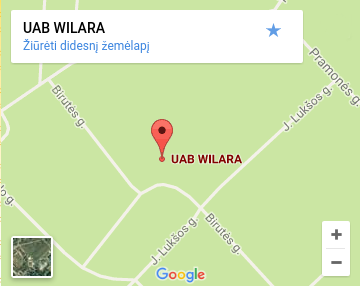
„Varroa Tester“, multifunctional „three in one“
# 1503216.50 €
Out of stock
VARROA TESTER 3-in-1 allows you to detect:
• degree of infection with Varroa destructor mites;
• Varroa destructor ticks’ resistance (sensitivity) to acaricides – veterinary medicines containing the active substance;
• The functioning of the bee cleansing instinct.
It allows you determine if there is a mites’ resistance to a specific substance you use to treat against varoatosis (amitraz, pyrethroid insecticide, fluvalinate, flumethrin, etc.).
The bee self-cleansing instinct is generally viewed as an important indicator when choosing bee queens.
This small device has been designed in line with the European Food Safety Authority (EFSA) 2016 recommendations to develop a handy instrument to monitor the health status of bee colonies throughout the EU.
It is a quick, easy and accurate way to test the infection degree of mites in the colony, the ability of the bees to clean themselves and the resistance of the mites to a particular drug being used for bees’ treatment. You can watch also video here.
First method of use (I) for mites infection degree testing:
1. Collect about 300 bees. To fill a container A with the bees up to the second level marker.
2. Close container A with a cap B.
3. Pour a teaspoon of powdered sugar into container C.
4. Screw container C to the bottom of container A and shake it over 1-2 minutes to allow the sugar powder to cover/coat the bees thoroughly.
5. Make sure that most of the sugar powder has settled on the bottom of container C. Then unscrew container C only.
6. Add water to it to dissolve sugar powder. Count how many mites have floated to water surface.
7. The result is: if up to 3 mites – very low mite infestation; if 3 to 10 – average infestation; but if over 10 – big degree of mites’ infestation.
8. Do not forget to release the bees.
Second method of use (II) – for measuring mites’ resistance to active substance of treatment being used:
1. Fill Container A with the bees (about 150) taken from the brood honeycomb of the same hive you used it for the first testing. Fill them up to the first level mark of the container.
2. Close container A with the cap B. Put on and wear protective gloves for your safety! Now attach the drug-soaked stripe to container A by passing it through the H-shaped slot.
3. Place it in a dark place at a room temperature for six hours. The drug-soaked strip should be on top!
4. Remove the strip. Shake the container a few times over a sheet of clean white paper.
5. Result as follows: If the number of mites is 1/4 times higher than the previous result was, then the mites have not gained resistancy to the active substance of the drug you use for your colonies’ treatment.
Third method of use (III) – check for the hygienic cleaning behavior of the bee colony:
1. Remove the honeycomb with capped cells of 10-15 days larvae old.
2. Using the spikes or pins of containers A or C, try to pierce the selected part of the honeycomb you have for 2-3 times, by pressing the needles deeply into comb.
3. Return the honeycomb back to hive. The bee colony has a good cleaning instinct if either within 6 hours period were cleaned / restored more than 70% of the cells, or within 8 hours were cleaned more than 90% of the cellss, or full 100% of cells cleaned during 24 hours time period.

















